YYYYMMDD >>> BACK HOME <<< >>> SELECTED FEATURES <<< >>> HIDDEN ARCHIVE <<<
[20220623]
RAIN CALLING by LITO KATTOU at TRANEN [from 20220325 to 20220522]
[Photos: Jan Søndergaard]


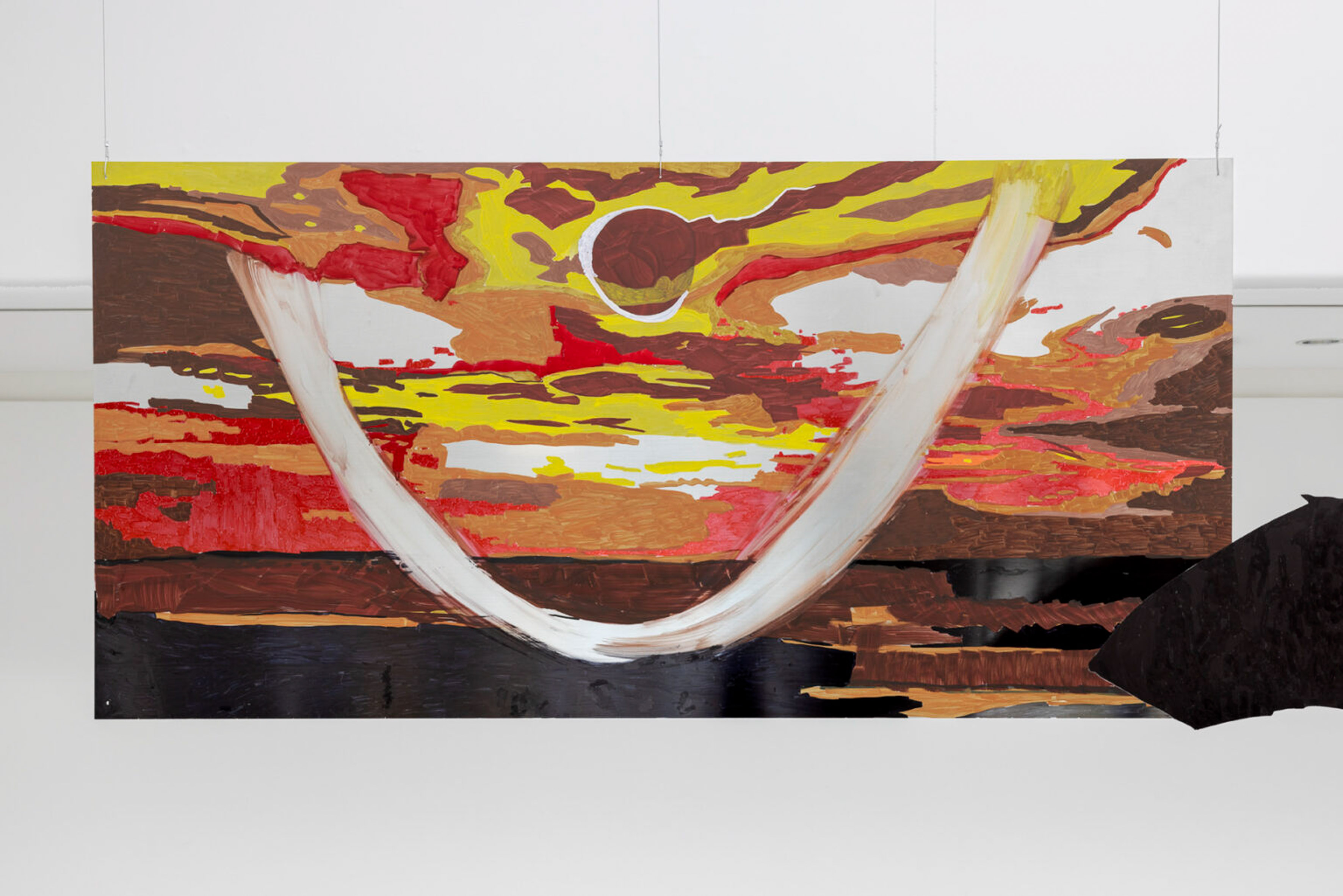
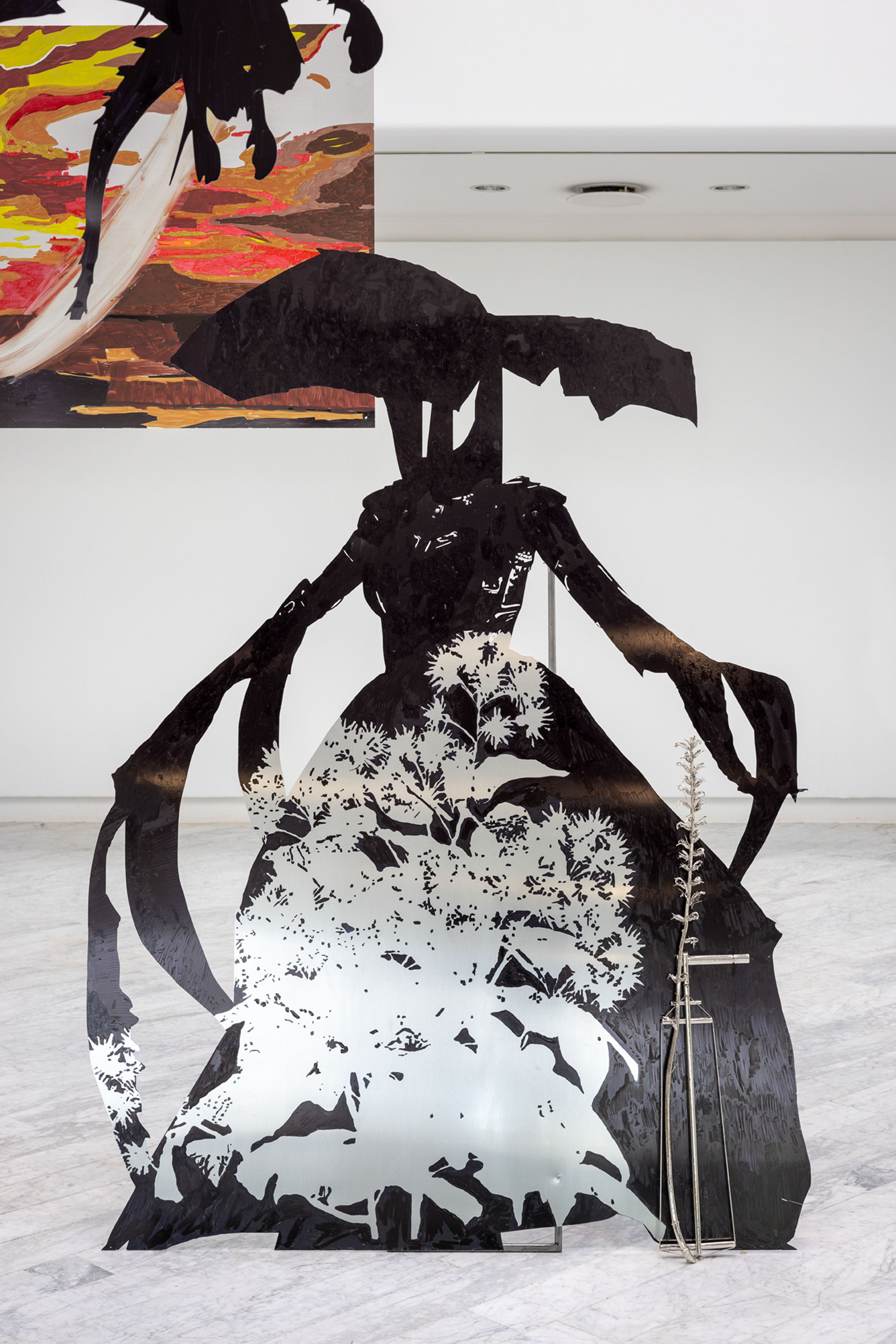




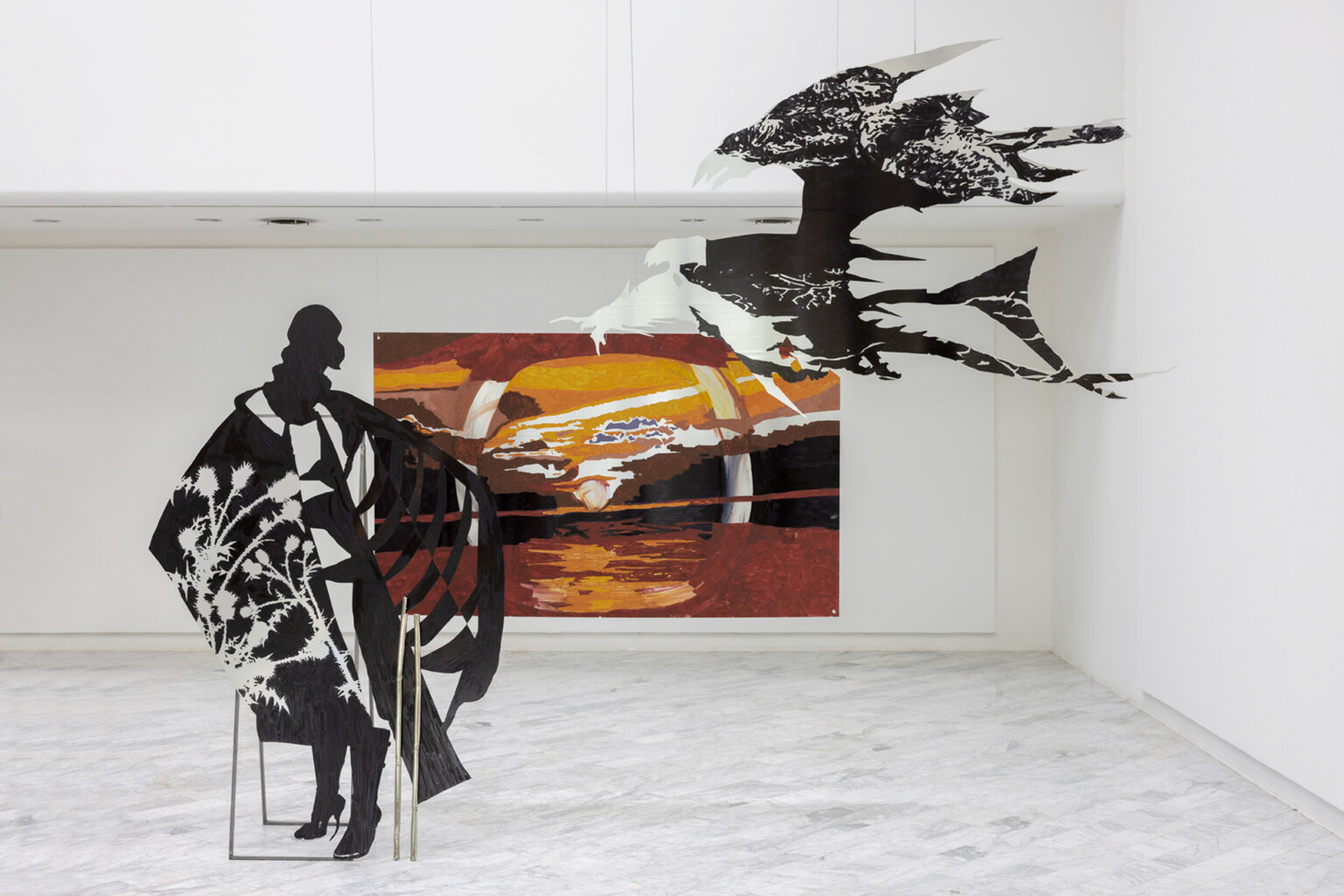



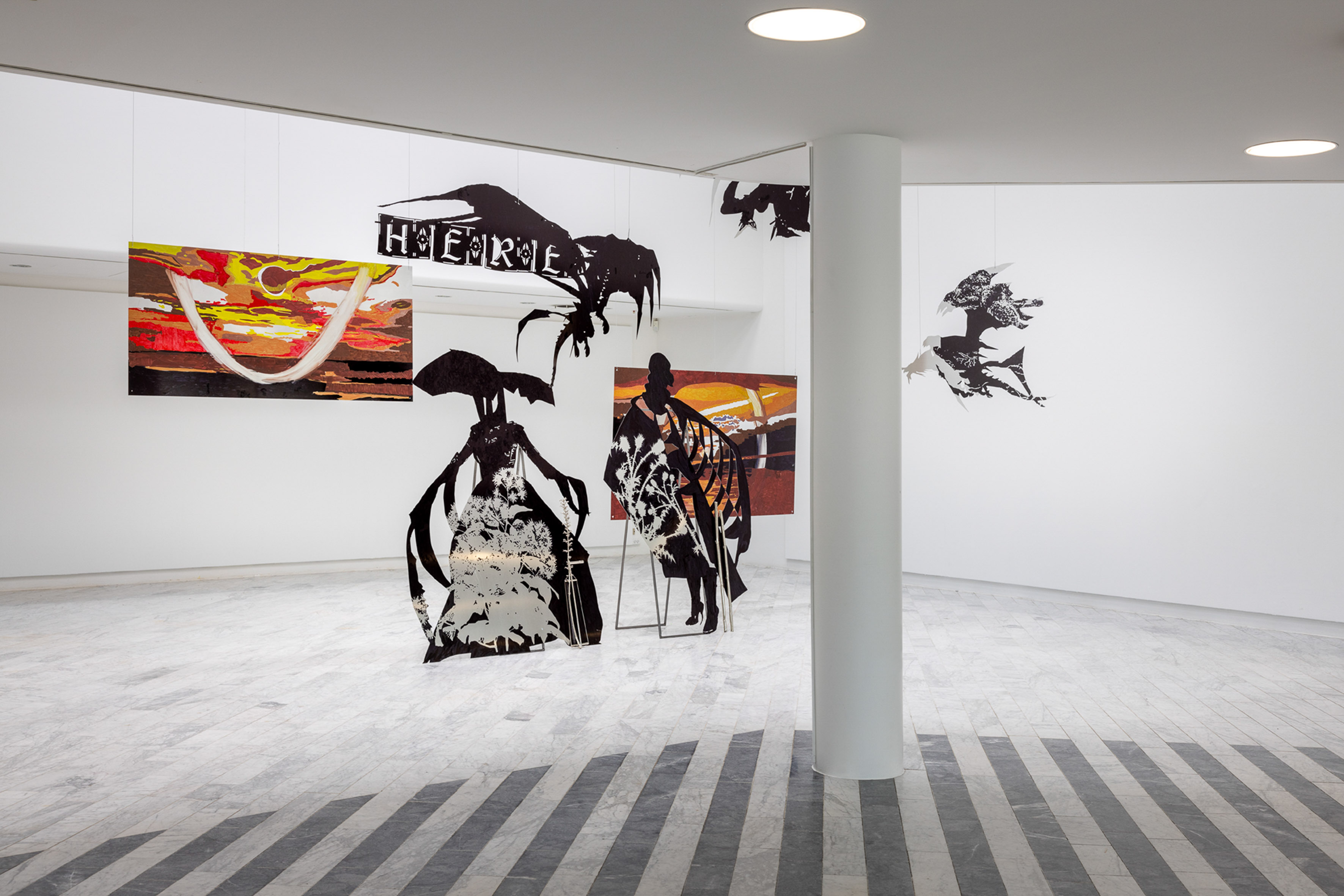


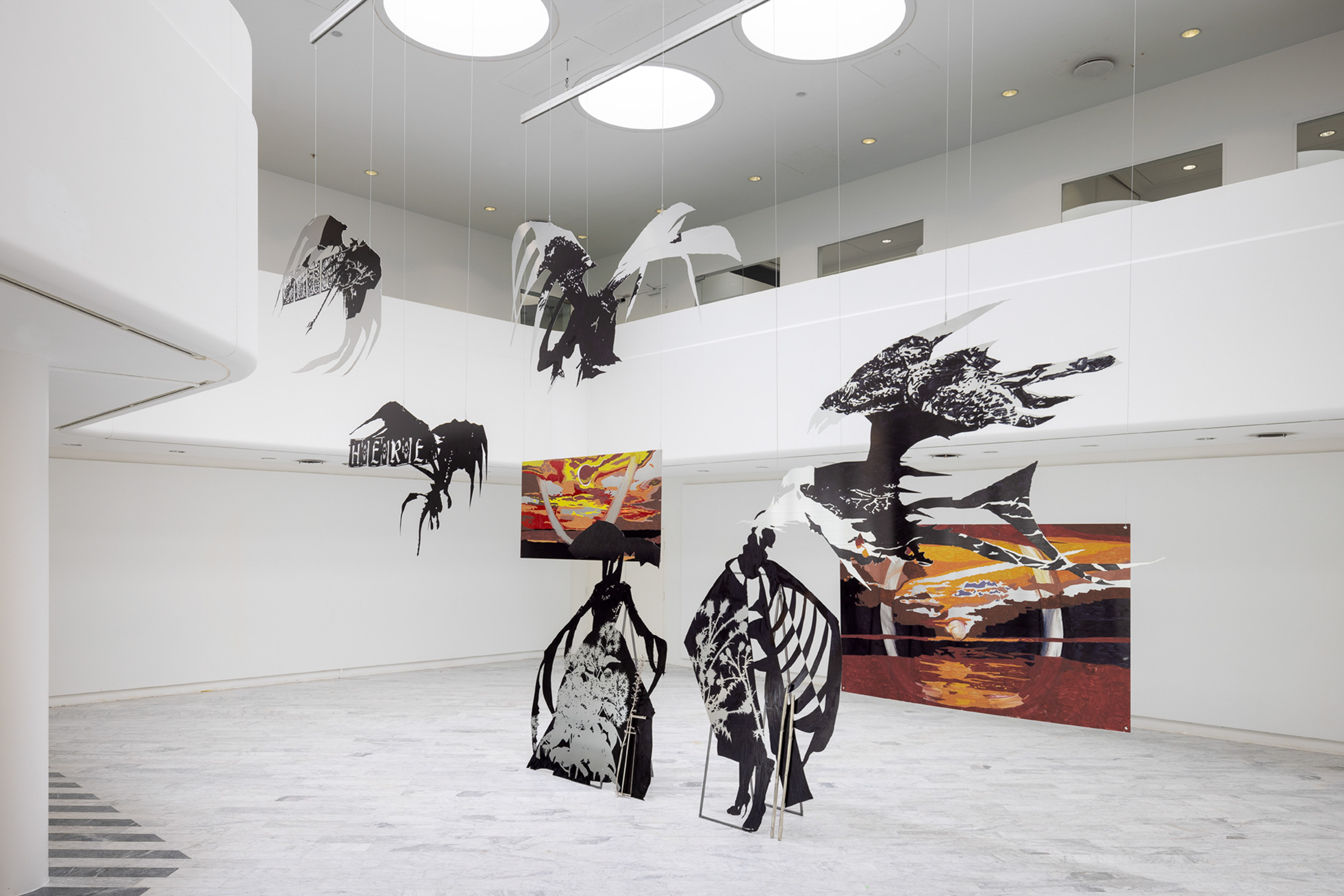

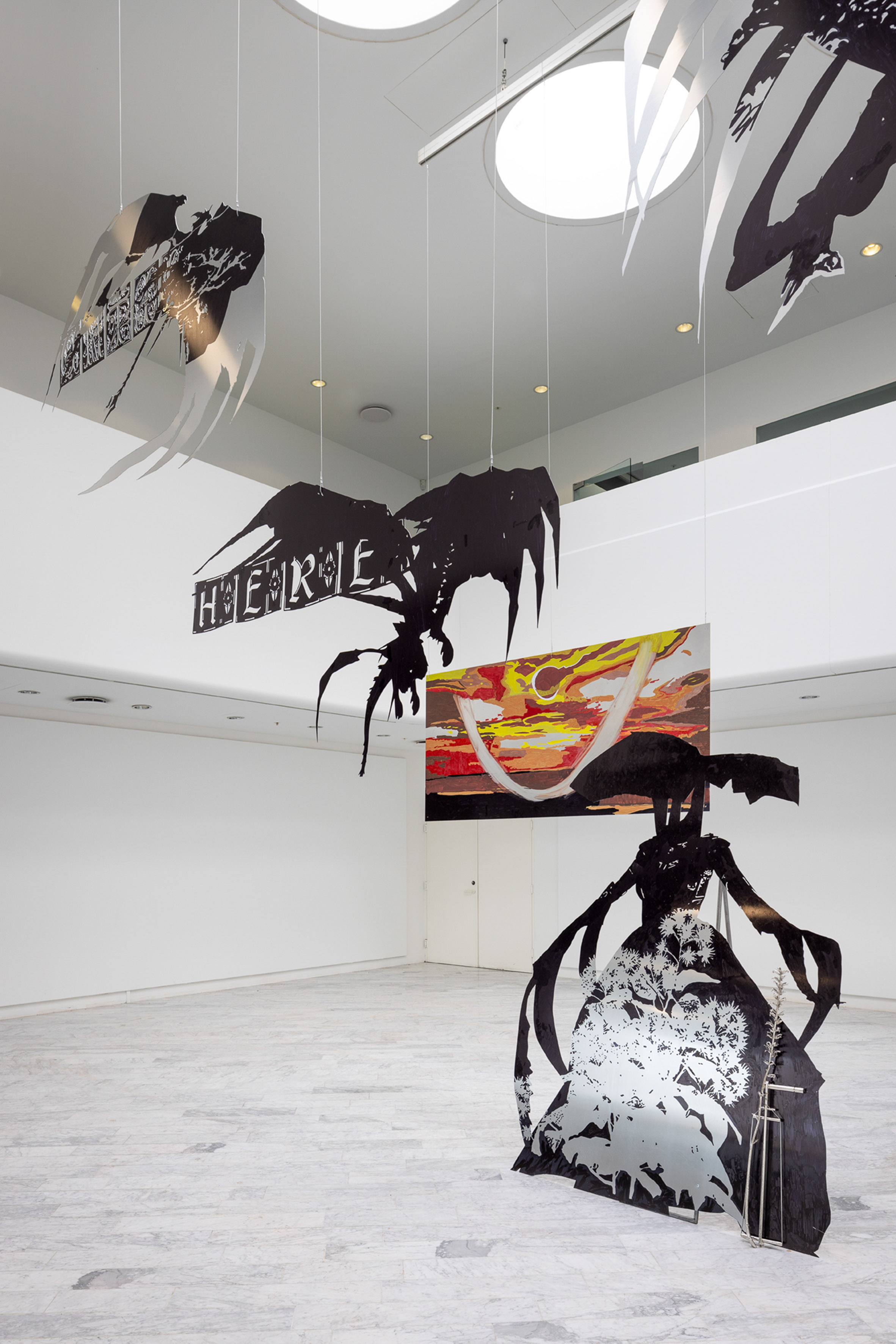
Throughout the history of art, paintings of the rising and setting sun have got us thinking. At twilight, the sun’s rays, refracted in the atmosphere in a myriad of colours, shed a different, enchanting light on the landscape and on the world. In Lito Kattou’s paintings too, the sun rises and sets on the horizon, but it does not merely shed light on the world. The fiery-red and yellow colours also devour and incinerate it. The landscape darkens. Lito Kattou’s two paintings of sunrises and sunsets are also images of an encroaching darkness. Dragons blacken the sky. Witches take to the stage. The dark forces are rushing into the sun.
Kattou – whose work is currently being presented at Tranen in the exhibition Rain Calling – was born and raised as a Greek Cypriot in Cyprus in the Middle Eastern Mediterranean, one of the hotspots of the climate crisis. Since the 1990s, ever-increasing drought has consumed so much of the water reserves that desalination plants now secure a large part of the water supply. In future, this afflicted island, where the sun shines 75% of the year, will encounter significantly less rain, higher temperatures, more forest fires and saltier sea. Kattou’s paintings on aluminium portray a Cyprus she regards as “an accelerated scenario for the global climate crisis.”
Today, Cyprus also represents a progress report for the globe of the future. The island in the eastern Mediterranean is a harbinger of what the future holds for our northern climes. However, in the exhibition, Kattou is just as concerned about how the global climate crisis is playing out and being experienced locally in the light of history. To put it another way, the exhibition hovers between past and future.
Historically, Kattou’s birthplace evolved in the northern part of the Middle East we refer to as the Fertile Crescent. It was here that agriculture, animal husbandry, irrigation etc. first developed more than 10,000 years ago. It was here that they noticed at an early stage the unforeseen consequences of this development: for example, drought, which still plagues and destabilises the region today. It was also here, in the centuries BC, that people worshipped Demeter, the ancient Greek goddess of harvest and agriculture. She gave the king’s son Triptolomos the dragons that pulled her chariot across the sky, thereby controlling the weather and the rain. Throughout history, people invoked dragons to safeguard the harvest, thereby developing agriculture, society and civilisation. But Kattou’s dragons also allude to later Western beliefs and superstitions, in which they mainly take the form of fire-breathing beasts that can only be defeated by a heroic knight as an emissary of enlightened culture. The dragons that figure in Kattou’s exhibition are both hopeful and ominous signs from the higher powers, at whose mercy we live.
Like the dragons, the figures in the foreground, who also make their entry under Kattou’s blazing sun, are also ambiguous. But they are more nondescript: as nondescript as the witches of history who served as models for Kattou’s works, and who were blamed throughout Europe for all the misfortunes of the world. In the aftermath of the Little Ice Age – a period of fluctuating temperatures from the 14th to the 19th century – witches increasingly became scapegoats. In the absence of better explanations, climate change, which researchers today attribute to everything from volcanic eruptions to depopulation, was construed as the result of weather witches or so-called Tempestarii. Despite the ambivalence of the Roman Catholic Church vis-à-vis such a blasphemous interpretation of God’s will on earth, witch hunts were widespread. In the centuries that followed, the rate of executions appears to have risen and fallen in tandem with temperature.
Stories of weather-makers feature in Greek polytheism, Christian monotheism and medieval folklore. Over time, though they became more profane, they did not disappear. The idea that the weather is something, to which you not only adapt, but which you can also change, lives on in today’s so-called geoengineering. Now, it is scientists, researchers and contractors – working on everything from carbon capture to modifications of the stratosphere – who create controversy by quickly wanting to fix the temperature. Their work is symptomatic of the new century on which we have embarked. Our world view is increasingly characterised by the great narrative of our age, which geologists have dubbed ‘Anthropocene’. Now, humankind – without magic or supernatural powers – is said to have become a force that transforms the planet on its own. Humankind, whether impotent or omnipotent, is seen not only as the problem, but also the solution.
In modern times, enlightenment and advances in technology may have driven away the dragons and witches. However, in our increasingly pertinacious attempts to control the weather, the climate and the earth, we constantly evoke powerful, ungovernable forces: mighty, unfathomable forces, which we both long for and fear, like the dragons and witches in Rain Calling.
Lito Kattou (b. Cyprus, 1990) was born and raised in Cyprus and lives and works in Athens. She went to art school in Athens, Munich and London. She was a resident at Art Hub Copenhagen in 2020. Kattou has exhibited throughout Europe, but Rain Calling is the very first exhibition of her work in the Nordic region.
Rain Calling is part of Tranen’s programme of extemporary art. The focus is on contemporary art that is not primarily focused on our contemporary condition. When everything from climate to technology evolves at ever greater pace, the present becomes ephemeral and intangible. The present starts to shrink. Meanwhile, our knowledge of the past increases. Speculations about the future abound. As part of this development, a lot of art is no longer contemporary — which literally means ‘with time.’ Instead, art is rather ‘extemporary, i.e. ‘out of time’.
The exhibition is generously supported by the Danish Arts Council.
[Text: Toke Lykkeberg]
©YYYYMMDD All content and design by Daniela Grabosch + Ricardo Almeida Roque unless otherwise stated. Images, Videos and Texts can only be used under permission of the author(s).